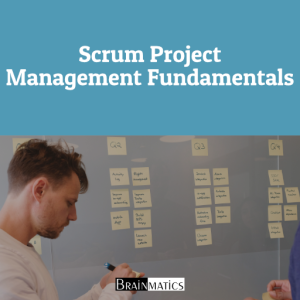Training Kubernetes Advanced ini dibuat untuk staff Dev-Ops (Developer Operations) berpengalaman yang ingin meningkatkan keterampilan orkestrasi kontainer (Docker) ke level berikutnya. Anda akan mempelajari konsep dan praktik terbaik yang lebih dalam untuk membangun, menerapkan, dan mengelola aplikasi kompleks dalam skala besar di lingkungan server yang menerapkan teknologi Kubernetes.
OBJECTIVES
- Mendesain dan menerapkan strategi penerapan lanjutan untuk ketersediaan tinggi dan penerapan tanpa downtime.
- Menggunakan service mesh untuk mengelola traffic route, security, dan observabilitas untuk aplikasi containerized (Docker).
- Mengintegrasikan solusi penyimpanan yang berbeda dengan Kubernetes untuk memastikan penyimpanan persisten/sementara untuk aplikasi.
- Menerapkan praktik keamanan yang kuat untuk melindungi aplikasi Anda di lingkungan Kubernetes.
- Menerapkan dan mengelola aplikasi di seluruh cluster Kubernetes untuk skalabilitas dan ketersediaan tinggi.
- Memecahkan masalah dan memantau cluster Kubernetes secara efektif untuk kinerja optimal.
- Menggunakan alat dan teknik untuk mengelola seluruh siklus hidup aplikasi dalam lingkungan Kubernetes.
PREREQUISITES
Kubernetes Administration Fundamentals
CONTENT
1. Introduction
1.1. Velocity
1.2. Scaling Service and Teams
1.3. Abstracting Infrastructure
1.4. Efficiency
1.5. Cloud Native Ecosystem
2. Creating and Running Containers
2.1. Container Images
2.2. Building Application Images with Docker
2.3. Multistage Image Builds
2.4. Storing Images in a Remote Registry
2.5. The Container Runtime Interface
3. Deploying a Kubernetes Cluster
3.1. Installing Kubernetes on a Public Cloud Provider
3.2. Installing Kubernetes Locally Using Minikube
3.3. Running Kubernetes in Docker
3.4. The Kubernetes Client
3.5. Cluster Components
4. Common kubectl Commands
4.1. Namespaces
4.2. Contexts
4.3. Viewing Kubernetes API Objects
4.4. Creating, Updating, and Destroying Kubernetes Objects
4.5. Labeling and Annotating Objects
4.6. Debugging Commands
4.7. Cluster Management
4.8. Command Autocompletion
4.9. Viewing Cluster
5. Pods
5.1. Pods in Kubernetes
5.2. Thinking with Pods
5.3. The Pod Manifest
5.4. Running Pods
5.5. Accessing Pod
5.6. Health Checks
5.7. Resource Management
5.8. Persisting Data with Volumes
6. Labels and Annotations
6.1. Labels
6.2. Annotations
7. Service Discovery
7.1. Introduction Service Discovery
7.2. The Service Object
7.3. Looking Beyond the Cluster
7.4. Load Balancer Integration
7.5. Advanced Details
7.6. Connecting with Other Environments
8. HTTP Load Balancing with Ingress
8.1. Ingress Spec Versus Ingress Controllers
8.2. Installing Contour
8.3. Using Ingress
8.4. Advanced Ingress Topis and Gotchas
8.5. Alternate Ingress Implementations
8.6. The Future of Ingress
9. ReplicaSets
9.1. Reconciliation Loops
9.2. Relating Pods and ReplicaSets
9.3. Designing with ReplicaSets
9.4. ReplicaSet Spec
9.5. Creating a ReplicaSet
9.6. Inspecting a ReplicaSet
9.7. Scaling ReplicaSets
9.8. Deleting ReplicaSets
10. Deployments
10.1. Creating Deployments
10.2. Managing Deployments
10.3. Updating Deployments
10.4. Deployment Strategies
10.5. Deleting a Deployment
10.6. Monitoring a Deployment
11. DaemonSets
11.1. DaemonSet Scheduler
11.2. Creating DaemonSets
11.3. Limiting DaemonSets to Specific Nodes
11.4. Updating a DaemonSet
11.5. Deleting a DaemonSet
12. Jobs
12.1. The Job Object
12.2. Job Patterns
12.3. CronJobs
13. ConfigMaps and Secrets
13.1. ConfigMaps
13.2. Secrets
13.3. Naming Constraints
13.4. Managing ConfigMaps and Secrets
14. Role-Based Access Control for Kubernetes
14.1. Role-Based Access Control
14.2. Techniques for Managing RBAC
15. Integrating Storage Solutions and Kubernetes
15.1. Importing External Services
15.2. Running Reliable Singletons
15.3. Kubernetes-Native Storage with StatefulSets
16. Accessing Kubernetes from Common Programming Languages
16.1. The Kubernetes API
16.2. Programming the Kubernetes API
17. Securing Applications in Kubernetes
17.1. Understanding SecurityContext
17.2. Pod Security
17.3. Service Account Management
17.4. Role-Based Access Control
17.5. RuntimeClass
17.6. Network Policy
17.7. Service Mesh
17.8. Security Benchmark Tools
17.9. Image Security
18. Policy and Governance for Kubernetes Clusters
18.1. Why Policy and Governance Matter
18.2. Admission Flow
18.3. Policy and Governance with Gatekeeper
19. Multicluster Application Deployments
19.1. Before Even Begin
19.2. Starting at the Top with a Load-Balancing Approach
19.3. Building Applications for Multiple Clusters
20. Organizing Application
20.1. Managing Application in Source Control
20.2. Structuring Application for Development, Testing, and Deployment
20.3. Parameterizing Application with Templates
20.4. Deploying Application Around the World

